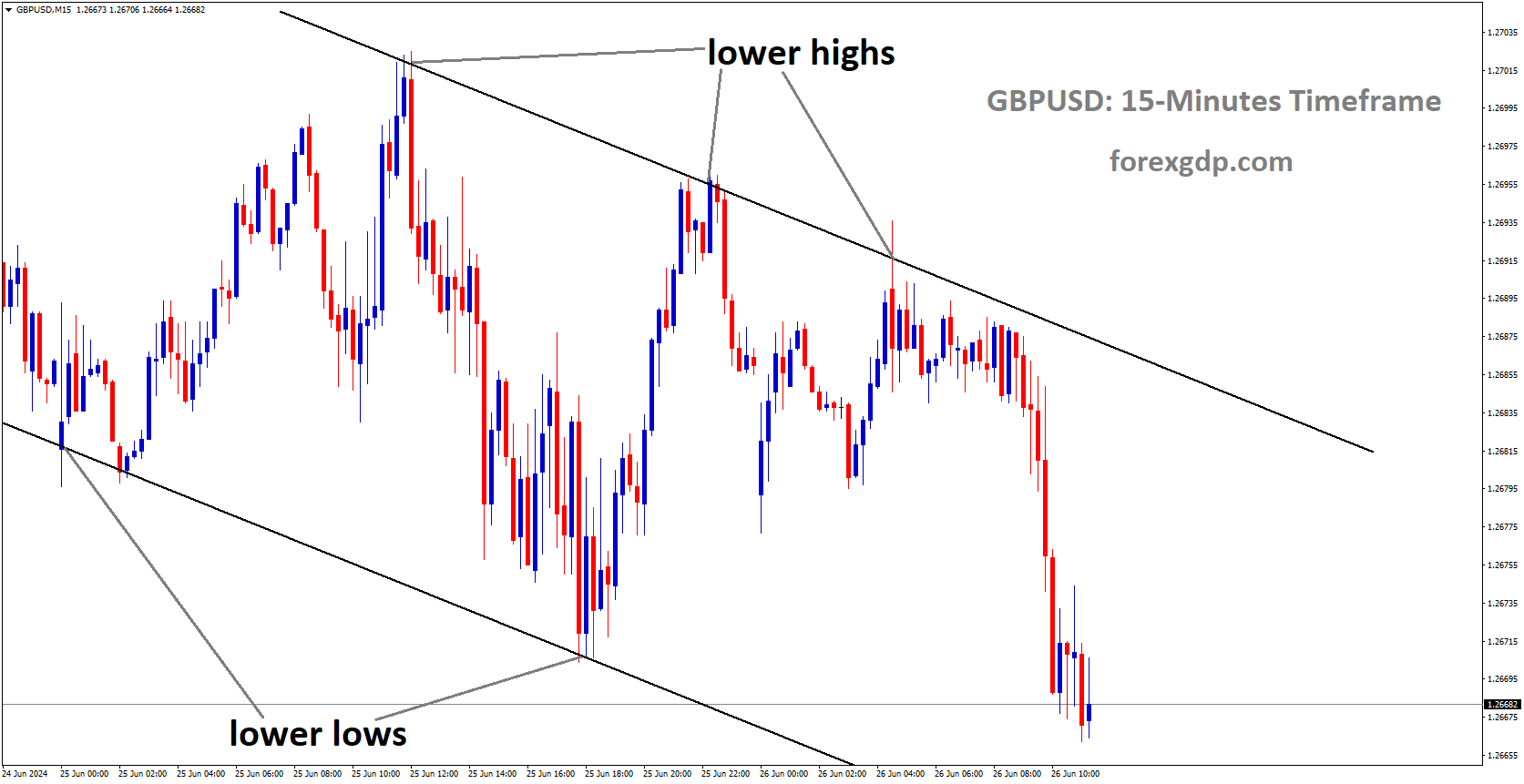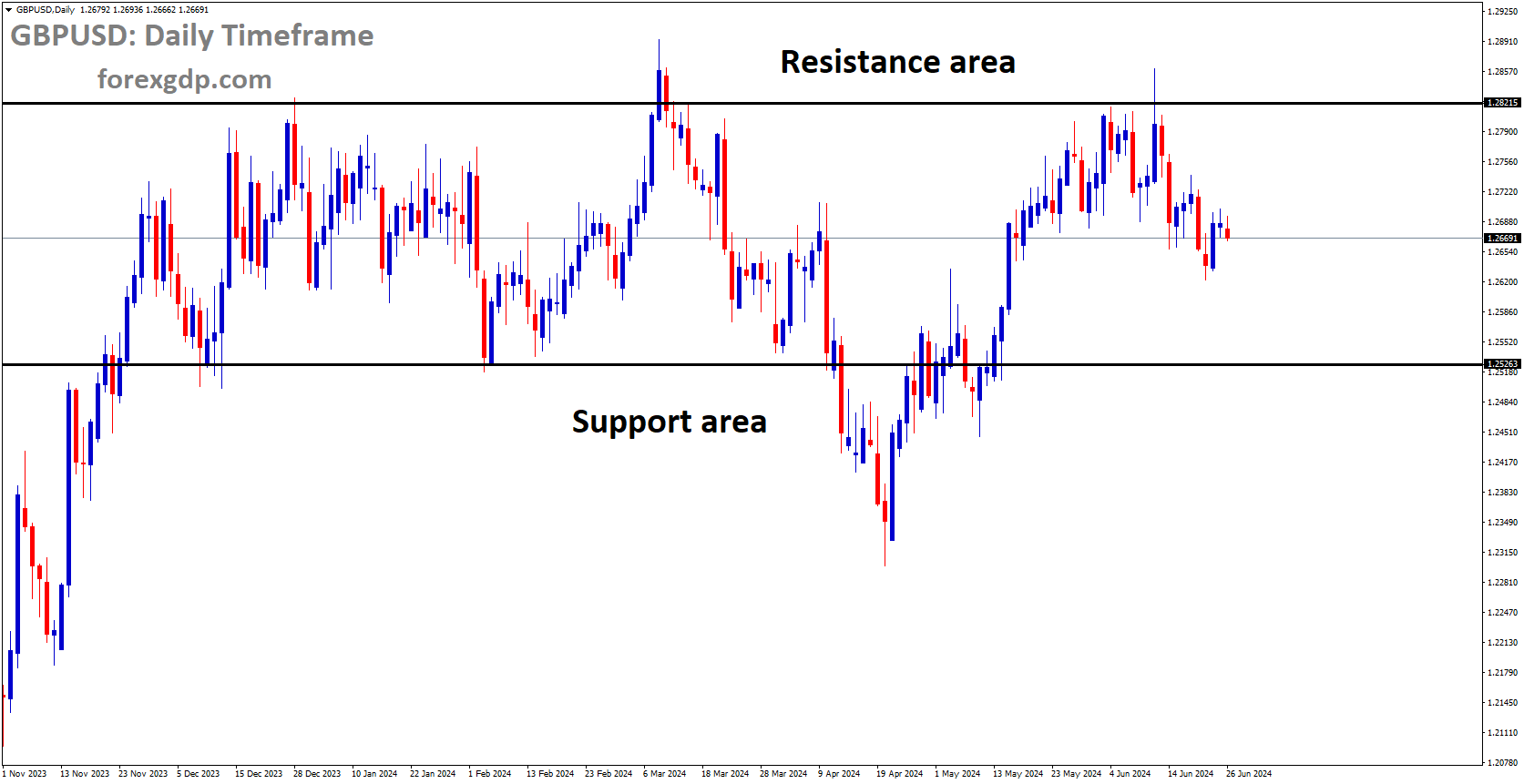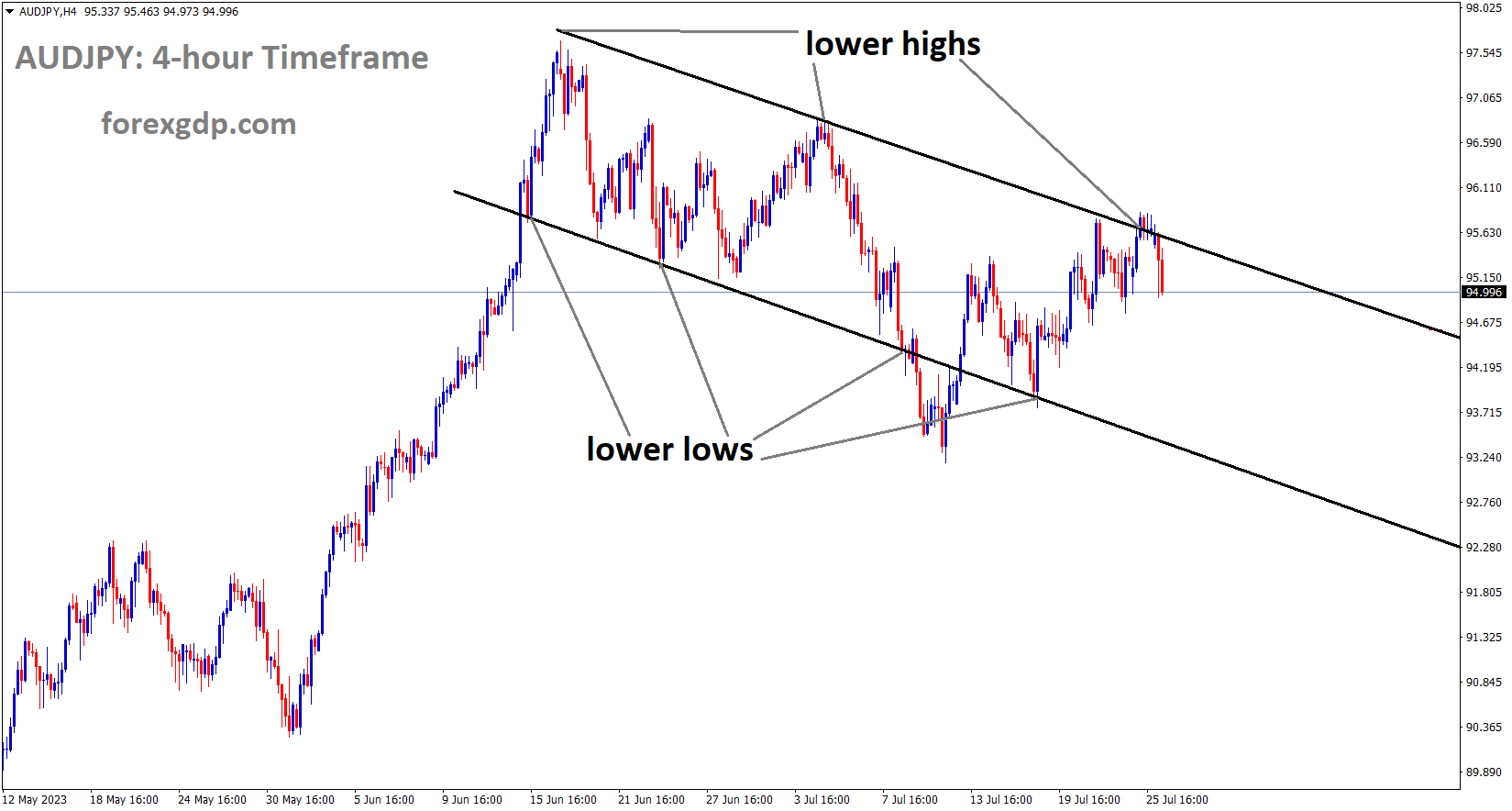GBPUSD is moving in box pattern and market has reached support area of the pattern
The Pound Sterling (GBP) is currently experiencing a rather lackluster performance against the US Dollar (USD), and there are several factors at play here. Let’s dive into what’s influencing this currency pair and what investors are keeping an eye on.
Shifting Focus: US Core PCE Inflation Data
One major focus for investors right now is the upcoming US core Personal Consumption Expenditures (PCE) Price Index data for May. This data is crucial as it serves as the Federal Reserve’s preferred inflation gauge. The core PCE inflation data is set to provide fresh cues about the timing and extent of interest rate adjustments by the Federal Reserve (Fed).
In May, the annual core PCE inflation is expected to have softened to 2.6%, down from 2.8% in April, with monthly growth anticipated to slow to 0.1% from 0.2%. These figures will be closely watched as they could influence the Fed’s decision-making regarding interest rates. Currently, there’s a buzz among investors that the Fed might kickstart its rate-cutting cycle in the upcoming September meeting, possibly extending it further into November or December.
Fed’s Stance on Interest Rates
Contrary to investor expectations, Fed policymakers have been advocating for maintaining interest rates at their current levels for a longer period. They seek concrete evidence that inflation is consistently declining towards the desired 2% rate before considering any rate cuts. This cautious approach is aimed at ensuring a stable economic environment.
Recently, Fed Governor Michelle Bowman expressed her support for continuing the current policy framework to control price pressures. She even hinted at the possibility of more rate hikes if disinflation stalls or reverses. When questioned about the timing for potential rate cuts, Bowman was clear that she doesn’t foresee any happening this year.
UK’s High Wage Inflation and BoE’s Dilemma
On the other side of the pond, the Bank of England (BoE) is grappling with its own set of challenges. The UK’s high wage inflation is a significant factor preventing BoE policymakers from committing to interest rate cuts. Despite headline inflation returning to the desired 2% rate, the service sector’s inflation remains persistently high due to strong wage growth.
BoE officials consider service inflation a critical measure for making decisions on interest rates. They want to see a sustained decline in service inflation before gaining confidence in lowering borrowing rates. This cautious approach means that, unlike some of its counterparts, the BoE has not yet committed to any near-term rate cuts.
GBPUSD is moving in Descending channel and market has fallen from the lower high area of the channel
Political Uncertainty and Its Impact
Adding to the complexity is the political uncertainty in the UK. The upcoming parliamentary elections are expected to keep the Pound Sterling on its toes. Market participants are closely monitoring these elections, as the opposition Labour Party seems to have an upper hand over the Conservative Party. The first round of these elections will commence on July 4, and the outcome could significantly influence the Pound’s performance.
Pound Sterling’s Performance Against Other Currencies
Interestingly, the Pound Sterling has been performing strongly against a majority of its peers. However, it has weakened against the Australian Dollar (AUD). This is primarily due to Australia’s monthly Consumer Price Index (CPI) rising strongly by 4.0%, exceeding expectations of 3.8%. This robust inflation figure has weighed on expectations of more rate cuts by the Reserve Bank of Australia (RBA), thereby strengthening the Australian Dollar against the Pound.
Unlike the Swiss National Bank (SNB), the Bank of Canada (BoC), and the European Central Bank (ECB), which have already begun their policy-easing cycles, the BoE remains cautious. The persistent high wage growth in the UK makes interest rate cuts inappropriate at this juncture.
What to Watch For
For investors and market watchers, several key points are worth monitoring:
- US Core PCE Inflation Data: This data will be pivotal in understanding the Fed’s future actions regarding interest rates.
- BoE’s Policy Decisions: Any signals or announcements from the BoE about rate cuts or hikes will have significant implications for the Pound.
- UK Parliamentary Elections: The political landscape in the UK could bring about considerable volatility in the Pound’s performance.
GBPUSD is moving in box pattern and market has fallen from the resistance area of the pattern
Summary
The Pound Sterling is currently navigating through a period of uncertainty, influenced by high wage inflation in the UK, cautious policymaking by the BoE, and political uncertainties surrounding the upcoming parliamentary elections. On the other hand, the US core PCE inflation data remains a key focus for investors, as it could dictate the Fed’s approach to interest rate adjustments in the coming months.
As we move forward, keeping an eye on these factors will be crucial for understanding the dynamics between the Pound Sterling and the US Dollar, as well as its performance against other currencies like the Australian Dollar. The financial landscape is ever-changing, and staying informed will help in making more strategic investment decisions.
Don’t trade all the time, trade forex only at the confirmed trade setups
Get more confirmed trade signals at premium or supreme – Click here to get more signals , 2200%, 800% growth in Real Live USD trading account of our users – click here to see , or If you want to get FREE Trial signals, You can Join FREE Signals Now!









